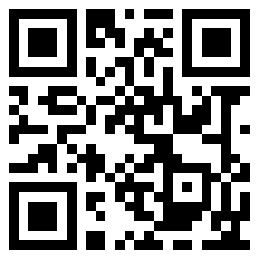听力音频:
Part 1
Questions 1-10Listen from here
Complete the notes below.
Write ONE WORD AND/OR A NUMBER for each answer.
Notes on Riverside Club
Classes
Level: 1___________ (age 10 to 13)
Minimum 2___________ people required for a class.
Classes last 1 hour.
Coaches and other staff
Adrian Miles – Head coach
Tom Peters – 3___________ to head coach – member of the national team
Cathy Davis – Coach – former 4___________ player
Tom Black – Sports psychologist – assists player in developing their 5___________ skills
Membership
Adults: £250 per year
Children under 16: £200 per year, or 6___________ if both parents are members
Club is open from 9 am to 7___________ daily.
Facilities
Two indoor courts open all year round
Four 8___________ courts only for use from May to September
A restaurant that serves main dishes and desserts
The café is only open in the 9___________
A Gym is equipped with modern equipment
A 10___________ to relax after playing sports
Part 2
Questions 11-16Listen from here
Choose the correct letter, A, B or C.
Working from home
11. According to the speaker, some office workers may
A
- leave their jobs.
B
- make requests to work from home.
C
- no longer spend all of their working hours in the workplace.
12. The greater flexibility in working hours offered by working from home may be particularly important for
A
- older workers.
B
- parents with young children.
C
- employees with a long working week.
13. People who work from home may have a lower stress level because they don’t need to
A
- commute to work.
B
- spend long hours at work.
C
- travel to meetings.
14. People may be more productive at home because they have
A
- a more comfortable workspace.
B
- fewer interruptions from people.
C
- more control over communication.
15. Some people who work from home may experience isolation and loneliness due to
A
- a reduction in quality of work.
B
- a decline in social interaction.
C
- an increase in their workload.
16. According to the paragraph, what is the key characteristic needed to overcome the challenge of distractions when working from home?
A
- creativity
B
- technical proficiency
C
- self-discipline
Questions 17-20 Listen from here
What advice does the speaker give for working from home?
Choose FOUR answers from the box and write the correct letter, A-H, next to Questions 17-20.
Advice for working from home
Advice given by the speaker
A
- arrange time for breaks and meals
B
- avoid making any social arrangements during the working day
C
- create separation between work and personal spaces
D
- make sure your workspace has a enough light
E
- become involved in local activities
F
- be disciplined about working time
G
- plan the working day ahead
H
- spend time interacting with colleagues
Part 3
Questions 21-30Listen from here
Complete the table below.
Write ONE WORD ONLY for each answer.
Summary of work experience on a farm
|
Work Experience |
Harry |
Andrea |
|
Aspect of work they liked |
Was impressed by the 21 |
It felt very worthwhile |
|
Surprising element |
Work was very demanding. Needed a lot of 22 and technical knowledge |
|
|
Career plan |
Unlikely to become a 23 |
—— |
|
Both need to write a report in the 24 about the experience |
|
|
Drama Workshop Tasks and Other work
|
Drama Workshop Tasks |
Activity |
Harry |
Andrea |
|
|
Skill to demonstrate |
Write a 25 |
Use 26 |
|
|
Other creative task |
—— |
Write a 27 |
|
Final Project Work |
Task |
Write a report about a play |
Presentation topic: A 28 |
|
|
Group project |
—— |
A short 29 |
|
Other Creative Work |
Design responsibility |
A theatre 30 |
—— |
Part 4
Questions 31-40Listen from here
Complete the notes below.
Write ONE WORD ONLY for each answer.
The development of the Australian accent
The Australian accent developed from the mixing of different English accents in the new British colony of Australia.
- By the 1820s, native-born white Australians spoke with an accent that was different from MC British accent.
Features of the new Australian accent
- It had distinctive features, which are
31
sounds (including vowel length and vowel shift).
- The vowel shift affected the pronunciation of the vowels in words like
32
and ‘cat’.
- The intonation pattern used for statements in the new accent was similar to the intonation pattern used for
33
in the original British accent.
Three varieties of the Australian accent
- The broad variety was particularly used by the
34
class.
- The cultivated variety was spoken by the
35
- The general variety was the most widely used.
Australian national identity
- By the 1850s, the broad variety of the Australian accent was associated with Australian national identity.
— many national
36
— lyrics of popular songs and ‘bush ballads’ e.g. The Man from Snowy River
During the 1890s, some Australian
37
believed that the broad variety was a symbol of Australian national identity, because
— it was a social leveler
— it represented the principles of
38
Early 20th century – Australian
39
used the broad variety, helping to make this variety a symbol of national identity.
Mid-20th century – The general variety of the Australian accent became the most widely used, but the broad variety was still promoted as a symbol of national identity by
- national sporting heroes
- songs and films
40





